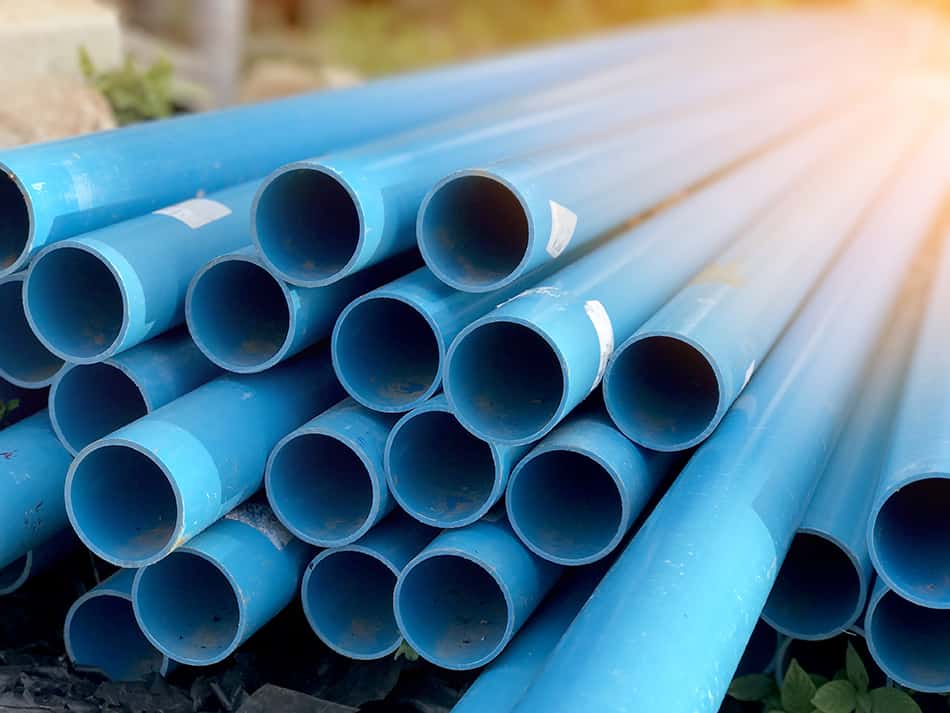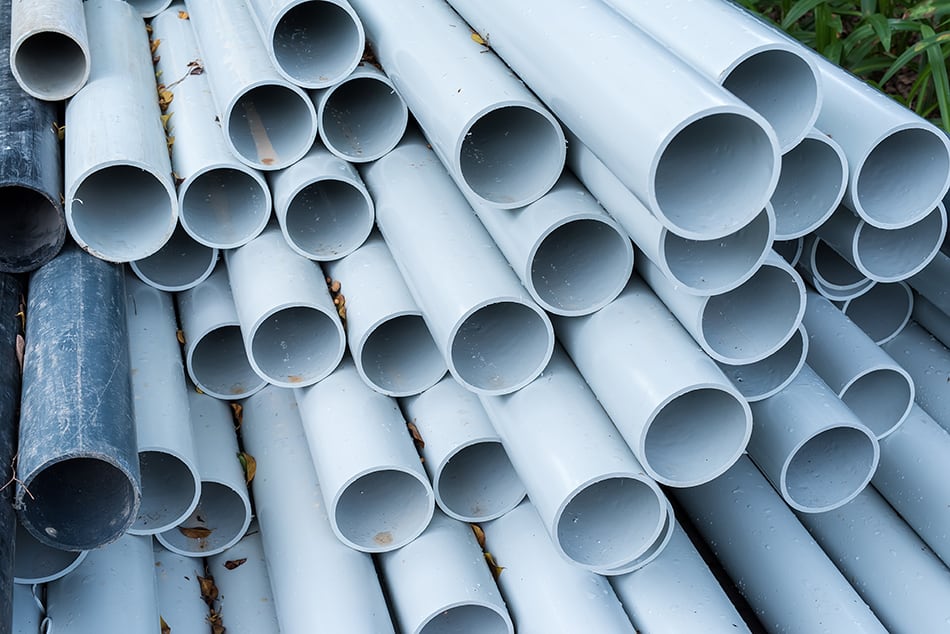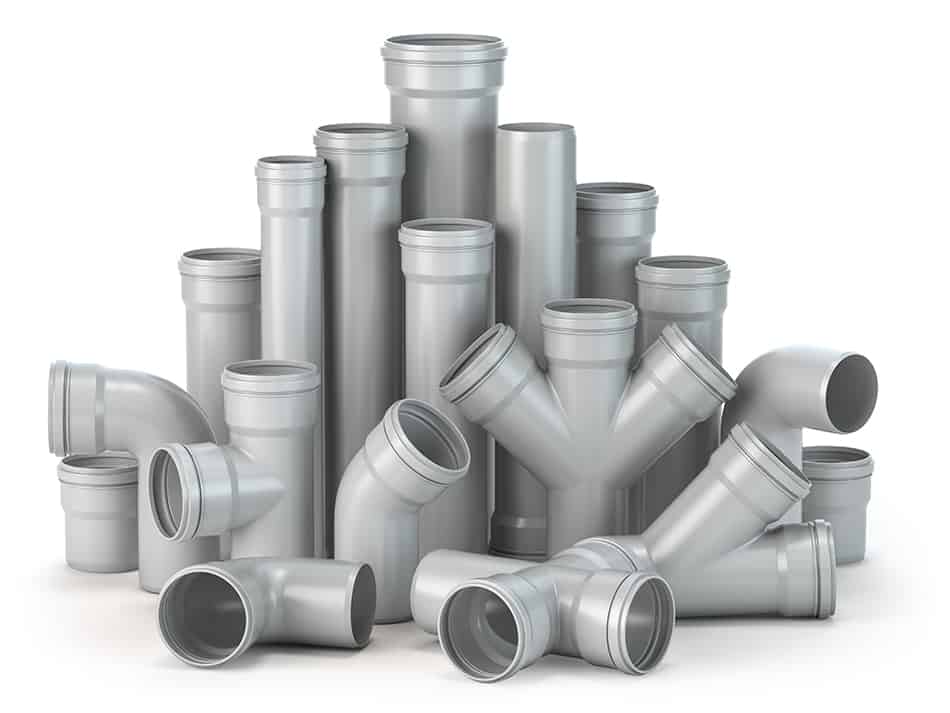PVC pipe is perhaps the most commonly used and versatile type of plastic piping. It has been used for more than 80 years and is now a fixture in homes, factories, buildings, and other structures. Compared to metal pipes, PVC pipe is strong, durable, and corrosion-resistant. This type of pipe is also cheap and available in many sizes.
PVC pipes are widely used in various applications, from transporting drinking water to the use of fire sprinkler systems. You can also see them in your home, particularly in the roofing system. PVC pipes are valued for their unique properties like recyclability, durability, cost efficiency, and safety.
You don’t need to be a builder to be interested in PVC pipe and fitting sizes. You could be an aspiring DIYer who’s looking to repair a PVC pipe. Or you may be planning to replace an existing pipe. Knowing PVC pipe and fitting sizes can serve you well.
PVC Pipe Sizes
Understanding PVC Pipe Terms
There are three key metrics on PVC pipes: inside diameter, outer diameter, and wall diameter or thickness.
Nominal Pipe Size
Nominal pipe size (NPS) is a standard used to define the size of PVC pipes based on their inside diameter (ID). ID. This refers to the measurement of the PVC pipe from top to bottom of its inside hole.
However, the actual inside diameter of the pipe can sometimes slightly differ from the nominal size. A 1-inch PVC pipe, for example, has an inside diameter of 1.029 inches, while its nominal size is 1 inch.
Outer Diameter
The outer diameter (OD) of the PVC pipe, meanwhile, is the measurement of the pipe from its top to bottom of its outside edges. This is also the metric that many people get confused with. The OD is always greater than the ID or referenced name of a PVC pipe. This means that a 1-inch PVC pipe will have an OD that is greater than 1 inch.
But the OD becomes important when you’re using a PVC pipe fitting with a non-PVC pipe. If the OD of the pipe is the same as the ID of the fitting, then both are compatible with each other.
Pipe Thickness (Wall Diameter)
On the other hand, wall diameter is the measure of the thickness of a pipe wall from the outside to its inside. As a PVC pipe increases its diameter, it also follows that its wall becomes thicker. If the wall is too thin, then the pipe would explode or leak. Therefore, the wall thickness gets higher as the PVC pipe gets larger.
PVC pipes are commonly available in Schedule 40 and Schedule 80, with Schedule 80 pipes having thicker walls and greater strength.
Standard PVC Pipe Sizes
Here are common nominal pipe sizes are.
- 1/2 inch
- 3/4 inch
- 1 inch
- 1 1/4 inch
- 1 1/2 inch
- 2 inch
- 3 inch
- 4 inch
- 6 inch
- 8 inch
- 10 inch
- 12 inch
Schedule 40 and 80 PVC Pipe Sizes
Schedule 40 and 80 PVC pipes are commonly used for plumbing and irrigation applications. Some common sizes for Schedule 40 PVC pipes are:
| Size | Outer Diameter (inches) | Wall Thickness (inches) |
|---|---|---|
| 1/2 inch | 0.84 | 0.109 |
| 3/4 inch | 1.05 | 0.113 |
| 1 inch | 1.315 | 0.133 |
| 1 1/4 inch | 1.66 | 0.14 |
| 1 1/2 inch | 1.9 | 0.145 |
| 2 inch | 2.375 | 0.154 |
Some common sizes for Schedule 80 PVC pipes are:
| Size | Outer Diameter (inches) | Wall Thickness (inches) |
|---|---|---|
| 1/2 inch | 0.84 | 0.147 |
| 3/4 inch | 1.05 | 0.154 |
| 1 inch | 1.315 | 0.179 |
| 1 1/4 inch | 1.66 | 0.191 |
| 1 1/2 inch | 1.9 | 0.2 |
| 2 inch | 2.375 | 0.218 |
Source: PVC Fittings Online & Commercial Industrial Supply
PVC Fitting Sizes
When working with PVC pipes and fittings, it is crucial to know the correct sizes for a proper fit. The most important factor to consider is the nominal size; this ensures compatibility between pipe and fittings regardless of the schedule type.
Couplings
PVC couplings are used to connect two pieces of pipe with the same diameter. They are available in a range of sizes, including:
- 1/2 inch
- 3/4 inch
- 1 inch
- 1-1/2 inch
- 2 inch
- 3 inch
- 4 inch
Elbows
PVC elbows change the direction of pipe runs. Common elbow sizes include:
- 1/2 inch
- 3/4 inch
- 1 inch
- 1-1/2 inch
- 2 inch
- 3 inch
- 4 inch
Tees
PVC tees join three pipes together and distribute the flow in multiple directions. Standard tee sizes are:
- 1/2 inch
- 3/4 inch
- 1 inch
- 1-1/2 inch
- 2 inch
- 3 inch
- 4 inch
Reducers
Reducers connect two pipes of different diameters, allowing the flow to transition smoothly between sizes. Common reducer sizes include:
- 1/2 inch x 3/4 inch
- 1 inch x 1-1/2 inch
- 1-1/2 inch x 2 inch
- 2 inch x 3 inch
- 3 inch x 4 inch
(Source)
Types of PVC Pipe Fitting
You may already know that you need to fit pipes together in order to achieve their purpose, whether it’s regulating fluid flow or transporting liquid waste. This is where PVC pipe fittings come in handy.
There are many different kinds of PVC pipe fittings that you can choose from.
Three-Way PVC Corner Fitting
One of these is a three-way PVC corner fitting. It is also called side outlet elbows and is often used for making corners. It allows three pipes to be joined together at right angles, with two pipes along the same plane and one vertically separated from the two. There are many sizes of three-way PVC corner fittings to choose from.
Four-Way PVC Tee
There’s also a four-way PVC tee that branches the lead pipe into three different directions. Also called side outlet tees, it is quite difficult to find. It is commonly used in furniture PVC crafts, medical structures, and training equipment, among other purposes. Sizes range from ½ inches to 1 ½ inches in socket diameter.
Five-Way PVC Cross Fitting
A five-way PVC cross-fitting breaks up and branches the lead pipe in four different directions. This type of pipe fitting is commonly used in building walls, flooring structures, recreation, and medical structures.
PVC Elbows
Then there are the PVC elbows—45 degrees, 90 degrees, and adjustable PVC. The 45-degree PVC elbow, as you may correctly guess, connects two pipes of the same diameter to create a 45-degrees angle. On the other hand, the 90 degrees PVC elbow turns a pipe at a right angle, whether it is from the floor to the ceiling or vice versa. This is one of the more common PVC fittings. It’s often used in houses, pools, irrigation, and other outdoor water applications.
When you must adjust PVC pipes to a customized degree, you may opt for an adjustable PVC elbow. It can serve as a hinge. Adjustable PVC elbows come in either external or internal variations.
PVC Pipe Slip Tees
PVC pipe slip tees are similar to adjustable PVC elbows, as these pipe fittings are ideal for connecting pipes at customized angles. PVC pipe slip tees are a hinge solution for pipe structures during instances when you aren’t inclined to cut a pipe and compromise its strength. It also creates pivoting elements. At its bottom is a permanent-fit socket where you can connect to a single pipe, while its top has a socket where it can slide through a similarly sized PVC pipe, creating a hinge in the process.
Standard PVC Cross
Standard PVC cross is used in providing cross-member support in PVC projects like outer frame structures and pipe grids. It is a cross-shaped pipe with four sockets angled at 90 degrees. For permanent connections, it is recommended that PVC cement is used in attaching a PVC cross-fitting to a PVC pipe.
Standard PVC Tee
Lastly, a standard PVC tee has a T-shaped design. Two of its sockets are in line with each other, while the third one is in a perpendicular direction. This configuration allows for flat, three-way connections to be integrated into a PVC structure.
Conclusion
To sum up, PVC pipes are widely used not only in residential but also in industrial applications. If you are to replace a pipe, refer to the most important metric, which is the inside diameter or nominal or reference name.
It is the measurement of the pipe from top to bottom of the inside hole. Don’t confuse it with the outside diameter or OD of the pipe, which is always greater than the ID.








